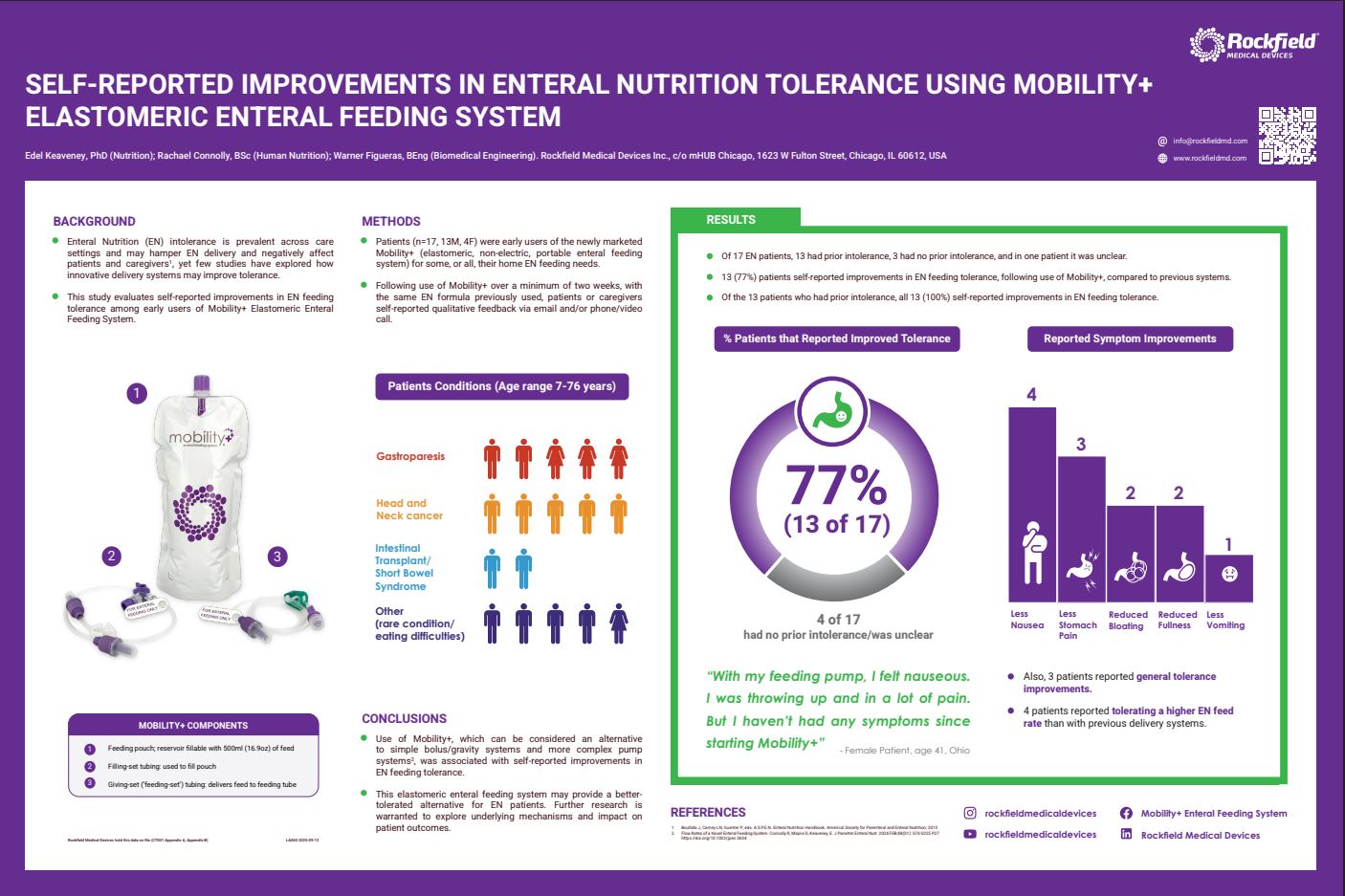Poster
Click to view the PDF version.
Abstract
Poster presented at FNCE25 conference.
Authors
Edel Keaveney, PhD (Nutrition)
Rachael Connolly, BSc (Human Nutrition)
Warner Figueras, BEng (Biomedical Engineering)
Rockfield Medical Devices, Galway, Ireland
Background
Enteral Nutrition (EN) intolerance is prevalent across care settings and may hamper EN delivery and negatively affect patients and caregivers, yet few studies have explored how innovative delivery systems may improve tolerance. This study evaluates self-reported improvements in EN feeding tolerance among early users of Mobility+ Elastomeric Enteral Feeding System.
Methods
Patients (n=17) with wide ranging conditions requiring EN, were early users of the newly marketed Mobility+ (elastomeric, non-electric, portable enteral feeding system) for some, or all, their home EN feeding needs. Following use of Mobility+ over a minimum of two weeks, with the same EN formula previously used, patients or caregivers self-reported qualitative feedback via email and/or phone/video call. Content analysis identified perceived improvements in tolerance in comparison to previous EN delivery systems.
Results
Of 17 EN patients (13M, 4F, aged 7-76 years), 13 (76.5%) self-reported improvements in EN feeding tolerance, following use of Mobility+, compared to previous systems. Three patients had no prior intolerance, and in one case, it was unclear whether the patient had experienced intolerance.
Of the 13 who noticed improvements:
four (23.5%) experienced less nausea
two (11.8%) reduced bloating
two (11.8%) reduced sensation of fullness
three (17.6%) less stomach pain
one (5.9%) less vomiting
Also, three (17.6%) reported general tolerance improvements and four (23.5%) reported tolerating a higher EN feed rate than with previous delivery systems.
Conclusion
Use of Mobility+, which can be considered an alternative to simple bolus/gravity systems and more complex pump systems, was associated with self-reported improvements in EN feeding tolerance. This elastomeric enteral feeding system may provide a better-tolerated alternative for EN patients. Further research is warranted to explore underlying mechanisms and impact on patient outcomes.
